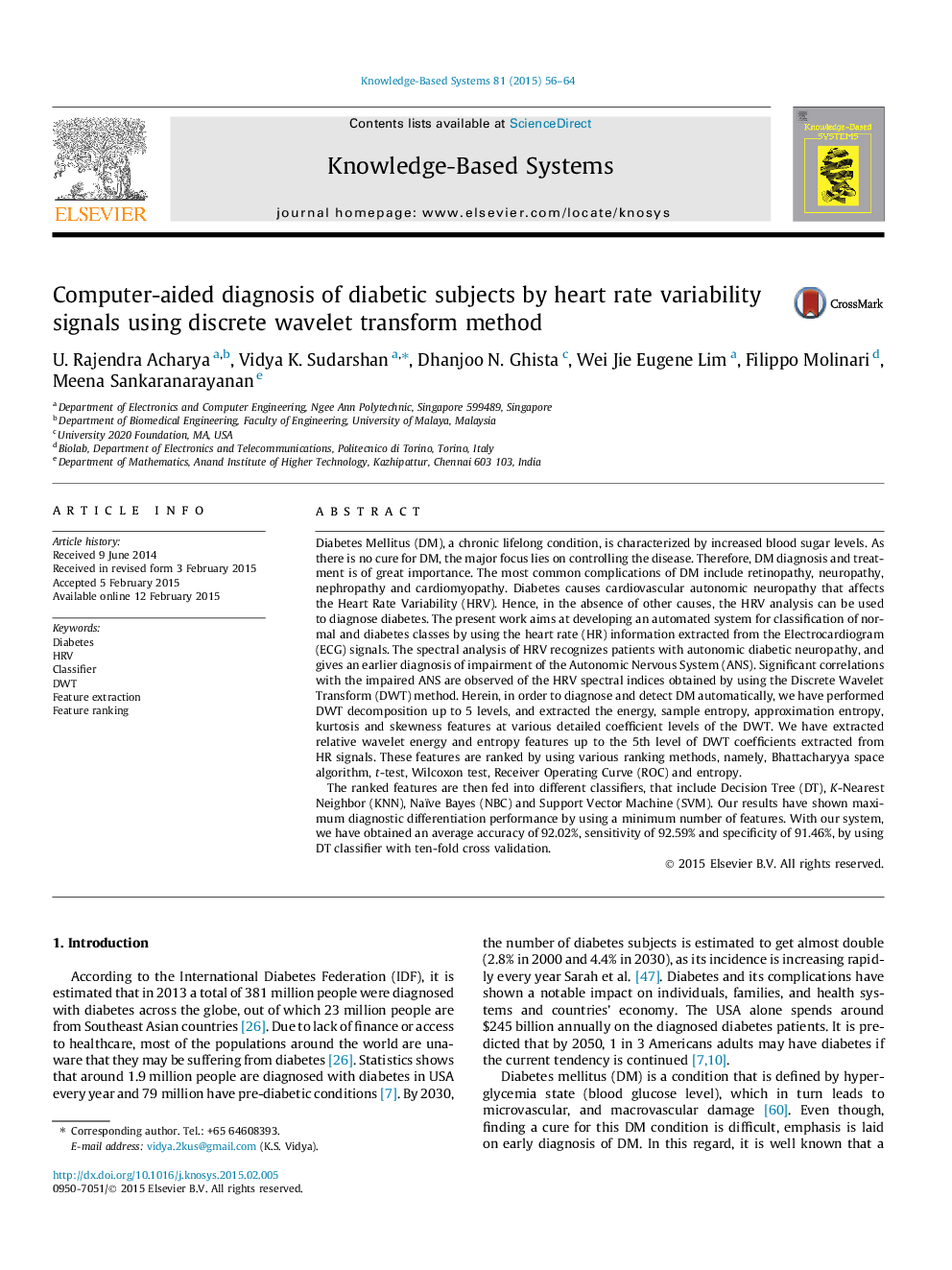| کد مقاله | کد نشریه | سال انتشار | مقاله انگلیسی | نسخه تمام متن |
|---|---|---|---|---|
| 403495 | 677249 | 2015 | 9 صفحه PDF | دانلود رایگان |
• Automated identification of normal and diabetic subjects using HRV signals.
• Features are extracted using DWT method.
• Ranked features are subjected to various classifiers.
• Proposed method classifies diabetes and normal subjects with 92.02% accuracy.
Diabetes Mellitus (DM), a chronic lifelong condition, is characterized by increased blood sugar levels. As there is no cure for DM, the major focus lies on controlling the disease. Therefore, DM diagnosis and treatment is of great importance. The most common complications of DM include retinopathy, neuropathy, nephropathy and cardiomyopathy. Diabetes causes cardiovascular autonomic neuropathy that affects the Heart Rate Variability (HRV). Hence, in the absence of other causes, the HRV analysis can be used to diagnose diabetes. The present work aims at developing an automated system for classification of normal and diabetes classes by using the heart rate (HR) information extracted from the Electrocardiogram (ECG) signals. The spectral analysis of HRV recognizes patients with autonomic diabetic neuropathy, and gives an earlier diagnosis of impairment of the Autonomic Nervous System (ANS). Significant correlations with the impaired ANS are observed of the HRV spectral indices obtained by using the Discrete Wavelet Transform (DWT) method. Herein, in order to diagnose and detect DM automatically, we have performed DWT decomposition up to 5 levels, and extracted the energy, sample entropy, approximation entropy, kurtosis and skewness features at various detailed coefficient levels of the DWT. We have extracted relative wavelet energy and entropy features up to the 5th level of DWT coefficients extracted from HR signals. These features are ranked by using various ranking methods, namely, Bhattacharyya space algorithm, t-test, Wilcoxon test, Receiver Operating Curve (ROC) and entropy.The ranked features are then fed into different classifiers, that include Decision Tree (DT), K-Nearest Neighbor (KNN), Naïve Bayes (NBC) and Support Vector Machine (SVM). Our results have shown maximum diagnostic differentiation performance by using a minimum number of features. With our system, we have obtained an average accuracy of 92.02%, sensitivity of 92.59% and specificity of 91.46%, by using DT classifier with ten-fold cross validation.
Journal: Knowledge-Based Systems - Volume 81, June 2015, Pages 56–64
